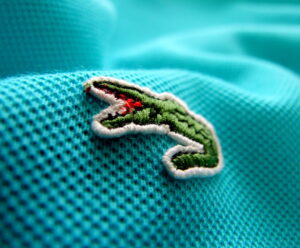When you think of iconic fashion brands, Lacoste likely springs to mind with its famous crocodile logo. But what exactly places Lacoste in the designer category? “Is Lacoste a Designer Brand?” This question pops up frequently among fashion enthusiasts and shoppers looking to define the brand’s status in the ever-evolving fashion hierarchy.
I’ve delved into the world of Lacoste, exploring its origins, evolution, and current standing in the fashion industry to shed some light on this query. From its inception as a sportswear icon to its present-day influence, understanding where Lacoste fits within the designer realm is not just about the logo but the legacy it carries. Join me as I unpack the elements that might just qualify Lacoste as a bona fide designer brand.
Is Lacoste a Designer Brand: Defining a Designer Brand
To understand whether Lacoste fits the criteria of a designer brand, it’s essential to define what characteristics embody such a status within the fashion world.
Criteria for Designer Status
Designer brands distinguish themselves through several definitive attributes:
- Distinctive Design Aesthetic: Brands qualify as designer if they offer a unique stylistic approach that sets them apart. Lacoste, for example, offers a refined blend of sporty and classic styles, highlighted by its iconic crocodile logo, which presents both a symbol of prestige and a mark of consistent quality.
- High Quality of Materials: A hallmark of designer brands is the use of superior materials. Lacoste’s polo shirts, synonymous with luxury sportswear, are crafted from high-quality cotton which ensures durability and comfort whilst maintaining a polished look.
- Limited Production and Exclusivity: Designer labels often produce fewer pieces to maintain exclusivity. While Lacoste is globally recognized and widely available, certain collections and collaborations are produced in limited quantities, enhancing their designer appeal.
- Brand History and Heritage: A rich heritage can elevate a brand to designer status. Founded by tennis legend René Lacoste in 1933, Lacoste carries a legacy intertwined with innovation and timeless style in the sportswear sector.
- Pricing Strategy: Designer brands often come with higher price points, reflecting their quality and exclusivity. Lacoste’s pricing aligns with the luxury market, positioning it within the upper echelon of sportswear and casual fashion brands.
Comparison With Other Brands
When compared to other brands perceived as high-end or designer, such as Ralph Lauren and Gucci, Lacoste holds its own by offering:
- Iconic Style and Recognition: Like Ralph Lauren with its polo player logo, Lacoste’s crocodile emblem is globally recognized and associated with a status of luxury and quality paralleling other designer brands.
- Market Position and Consumer Perception: Similar to how consumers view Louis Vittuon for its luxury leather goods, Lacoste is renowned for merging fashion with function, making it a staple in both wardrobe and culture across generations.
- Product Range and Versatility: While brands like Chanel and Gucci excel in haute couture, Lacoste provides a broad, accessible range of products that extend beyond just apparel, including footwear, fragrances, and accessories, yet still retains a luxury brand appeal.
Through this comparison, it’s evident that Lacoste exhibits key characteristics akin to established designer brands, thus reinforcing its designer brand status in the competitive fashion industry.
The Origins of Lacoste
The journey of Lacoste, known widely for its iconic crocodile logo, began as a tale of innovation and prestige in the world of luxury sportswear. Founded by tennis legend René Lacoste, the brand quickly transcended the sport, establishing itself as a symbol of luxury and designer style.
From Tennis Courts to Global Recognition
René Lacoste first made a mark in the tennis world, not only as a world-renowned player but also as an innovator of fashion on the court. It was in the late 1920s that he created the first ever polo shirt, specifically designed to provide better comfort and movement during games. This polo shirt, adorned with the now-iconic crocodile logo, revolutionized sportswear, introducing functionality paired with elegance.
The polo shirt’s practical design and distinctive style captured the attention of a broader audience, propelling Lacoste from a specialist in tennis apparel to a celebrated luxury lifestyle brand. Throughout the decades, the brand’s expansion into fragrances, footwear, and accessories continued to elevate its status. Lacoste’s ability to blend sport with fashion garnered global appeal, establishing it firmly within the luxury brand sector.
The Impact of René Lacoste
René Lacoste’s legacy on the fashion industry stretches far beyond the confines of tennis courts. He imbued Lacoste with a spirit of tenacity and innovation, qualities that became the cornerstone of the brand. His nickname, “the Crocodile,” is reflected in the logo, symbolizing his perseverance on the tennis court. This personal touch added an authentic flair to the brand, enhancing consumer connection.
The founding principles laid down by Lacoste were not just about crafting comfortable, functional clothes but also about pushing the boundaries of traditional sportswear to create timeless, iconic pieces. René’s vision propelled the brand to experiment and innovate, which in turn has helped maintain Lacossalce’s relevance in the ever-evolving fashion industry.
Lacoste’s Design Philosophy
Lacoste’s design philosophy harmonizes innovation with elegance, merging its sporty origins with lifestyle elements to create a sophisticated yet practical fashion line. This section explores how Lacosté continuously evolves while staying true to its heritage.
Innovation in Sportswear
Lacoste famously revolutionized tennis apparel by introducing the iconic polo shirt in the 1920s. Known for its unique, breathable fabric and the classic crocodile logo, this polo not only offered comfort and freedom of movement but also brought a polished aesthetic to sportswear. Additionally, Lacoste has employed innovative materials and technology to enhance the functionality of its sportswear lines. From moisture-wicking fabrics to designs that feature UV protection, Lacoste ensures each product combines quality, comfort, and performance. This focus on innovation aligns closely with the brand’s commitment to excellence and offers consumers sporty yet fashionable choices.
Transition Into Lifestyle Branding
Moving beyond the tennis courts, Lacoste has successfully transitioned into a comprehensive lifestyle brand. Expanding its portfolio to include footwear, leather goods, eyewear, watches, and fragrances, the brand crafts these products with the same attention to detail and quality as its historic polo shirts. Each item showcases the sleek, refined style characteristic of the brand, maintaining the essence of luxury sportswear while catering to a broader audience. The integration of sport-inspired designs into everyday fashion items underscores Lacoste’s design philosophy of blending practicality with luxury. This has not only reinforced its status as a luxury brand but also broadened its appeal to consumers worldwide who seek a casual yet sophisticated style in their daily lives.
Price Point and Market Position
Following its journey from a tennis-oriented apparel to a transcendent luxury lifestyle brand, Lacoste situates itself uniquely in the fashion industry. Spanning from premium to near-luxury categories, Lacoste’s market strategy ensures its apparel remains accessible while exuding sophistication and quality.
Luxury vs. Premium Categories
Lacoste’s branding strategy cleverly blurs the lines between premium and luxury sectors. The brand often aligns with luxury through its high-quality materials and craftsmanship. Compared to stalwarts like Gucci or Louis Vuitton, Lacoste positions itself with a slightly more accessible price point, thus retaining its label as a premium brand rather than pure luxury. The pricing strategy ensures that quality and style remain uncompromised, making Lacoste a favored choice among those who seek luxury sportswear without the steep luxury price tags. For instance, its iconic polo shirts, renowned for their cotton quality and timeless design, embody luxury but are priced within a more attainable range compared to true luxury brands.
Consumer Perception
Consumer perception of Lacoste holds that it represents a sophisticated, yet practical approach to fashion. This view is enhanced by its consistent focus on quality sports and lifestyle apparel, complemented by a broad array of accessories from eyewear to fragrances. The iconic crocodile logo serves as a symbol of prestige and understated luxury, boosting its status among consumers who value elegance and sporty style in their day-to-day wear. Responding to a global audience, Lacoste maintains a strong brand image that resonates with a sense of timeless sophistication and durability, aspects highly prized in the fashion world. Thus, while not positioned at the pinnacle of luxury, Lacoste enjoys a robust reputation as a high-end, reliable brand in the eyes of its international consumer base.
Lacoste’s Influence on Fashion
Lacoste has significantly shaped the fashion landscape, seamlessly blending sportswear with luxury and ultimately redefining the casual wear sector. The brand’s evolution from a tennis apparel manufacturer to an emblematic lifestyle brand emphasizes its far-reaching influence.
Iconic Designs and Cultural Impact
Lacoste’s designs, particularly the iconic polo shirt, have left an indelible mark on both the fashion industry and popular culture. Introduced in the 1920s, the Lacoste polo, often recognized by its emblematic crocodile logo, integrates the practicalities of sportswear with the elegance of everyday fashion. This design not only appealed to athletes, like tennis players, but also became a staple in the wardrobes of the fashion-savvy public, symbolizing a blend of comfort and class. Over decades, the polo shirt has been featured across multiple contexts, from golf courses to high-fashion events, showcasing its versatility and timeless appeal. The shirt’s design embodies the spirit of its founder, René Lacoste, marrying functionality with style—a principle that drives the brand to this day.
Contemporary Collaborations and Expansions
In recent years, Lacoste has expanded its influence by entering into strategic collaborations with other luxury brands and designers, including Louis Vuitton and Ralph Lauren. These partnerships have allowed Lacoste to infuse new aesthetics and innovations into its collections while maintaining the classic touch that fans expect. For example, collaborations have resulted in limited-edition collections that combine Lacoste’s sporty essence with the haute couture elements of partners like Gucci. Moreover, Lacoste has continuously adapted to the current fashion demands by expanding into new product categories such as accessories, leather goods, and fragrances. Each new launch showcases Lacoste’s commitment to innovation, quality, and sustainability, ensuring the brand remains relevant and cherished by new generations while honoring its heritage. These efforts highlight Lacoste’s successful expansion and adaptation strategies, securing its place as a leading figure in both the luxury sportswear and broader lifestyle sectors.
Reflecting on Lacoste’s journey from a sports apparel brand to a beacon of luxury lifestyle, it’s evident that it has carved a unique niche in the fashion industry. The brand’s commitment to quality, innovation, and sustainability has not only enhanced its product offerings but also reinforced its market position as a hybrid of premium and luxury. Lacoste’s ability to maintain its heritage while innovatively expanding into new territories and collaborations underscores its status as a designer brand. With its iconic crocodile emblem, Lacoste continues to symbolize elegance and prestige, appealing to a global audience that values both style and substance.
Frequently Asked Questions
Who owns Lacoste?
Maus Frères SA, a Swiss holding company based in Geneva, owns Lacoste. They manage multiple businesses, including department stores and other brands.
Is Lacoste still popular?
Yes, Lacoste remains popular. Its polo shirts are particularly iconic and come in various styles tailored to different sports and lifestyle needs, maintaining its status as a staple in fashion.
Why is Lacoste a preferred brand among wealthy individuals?
Lacoste is cherished by the affluent due to its long-standing reputation for quality and heritage. Established in the 1930s with the invention of the polo shirt, its premium pricing reflects its brand value and historic significance.
What makes Lacoste unique?
Lacoste stands out due to its blend of sporty elegance, luxurious design, and the famous crocodile logo. It holds a significant place in fashion history and continues to be a top choice globally for its stylish and high-quality garments.
How expensive is Lacoste?
Lacoste products are priced between mainstream and high-end luxury items, making them more premium than high-street brands but not as costly as the most expensive luxury brands, representing a balance of quality and affordability.
- Is A Polo Shirt Business Casual
- Is Adidas A Designer Brand
- Is Aldo A Designer Brand
- Is Alexander McQueen A Designer Brand
- Is Anne Klein A Designer Brand
- Is Armani A Designer Brand
- Is Balenciaga A Designer Brand
- Is Ben Sherman A Designer Brand
- Is Betsey Johnson A Designer Brand
- Is Bulova A Luxury Brand
- Is Burberry A Designer Brand
- Is Calvin Klein A Designer Brand
- Is Celine A Designer Brand
- Is Champion A Designer Brand
- Is Chanel A Designer Brand
- Is Chloe A Designer Brand
- Is Coach A Luxury Brand
- Is Diesel A Designer Brand
- Is Dior A Designer Brand
- Is DKNY A Designer Brand
- Is Dolce And Gabbana A Designer Brand
- Is Fendi A Designer Brand
- Is Fossil A Designer Brand
- Is Fossil A Good Brand For Watches
- Is French Connection A Designer Brand
- Is Giani Bernini A Designer Brand
- Is Givenchy A Designer Brand
- Is Gucci A Designer Brand
- Is Guess A Designer Brand
- Is H&M A Designer Brand
- Is Hugo Boss A Designer Brand
- Is Invicta A Good Watch Brand
- Is Jimmy Choo A Designer Brand
- Is Juicy Couture A Designer Brand
- Is Kate Spade A Designer Brand
- Is Kenneth Cole A Designer Brand
- Is Kenzo A Designer Brand
- Is Lacoste A Designer Brand
- Is Louis Vuitton A Designer Brand
- Is Mango A Designer Brand
- Is Marc Jacobs A Designer Brand
- Is Michael Kors A Designer Brand
- Is Mkf A Designer Brand
- Is Moncler A Designer Brand
- Is Moschino A Luxury Brand
- Is Nanette Lepore A Designer Brand
- Is Nike A Designer Brand
- Is Nine West A Designer Brand
- Is Prada A Designer Brand
- Is Puma A Designer Brand
- Is Ralph Lauren A Designer Brand
- Is Rebecca Minkoff A Designer Brand
- Is Refined Living About Exclusivity And Limited Access
- Is Rick Owens A Designer Brand
- Is Ted Baker A Designer Brand
- Is Theory A Designer Brand
- Is Tissot A Good Brand
- Is Tom Ford A Designer Brand
- Is Tommy Hilfiger A Designer Brand
- Is Tory Burch A Designer Brand
- Is Valentino A Designer Brand
- Is Vera Bradley A Designer Brand
- Is Vera Wang A Designer Brand
- Is Versace A Designer Brand
- Is Wrangler A Designer Brand
- Is Zara A Designer Brand

